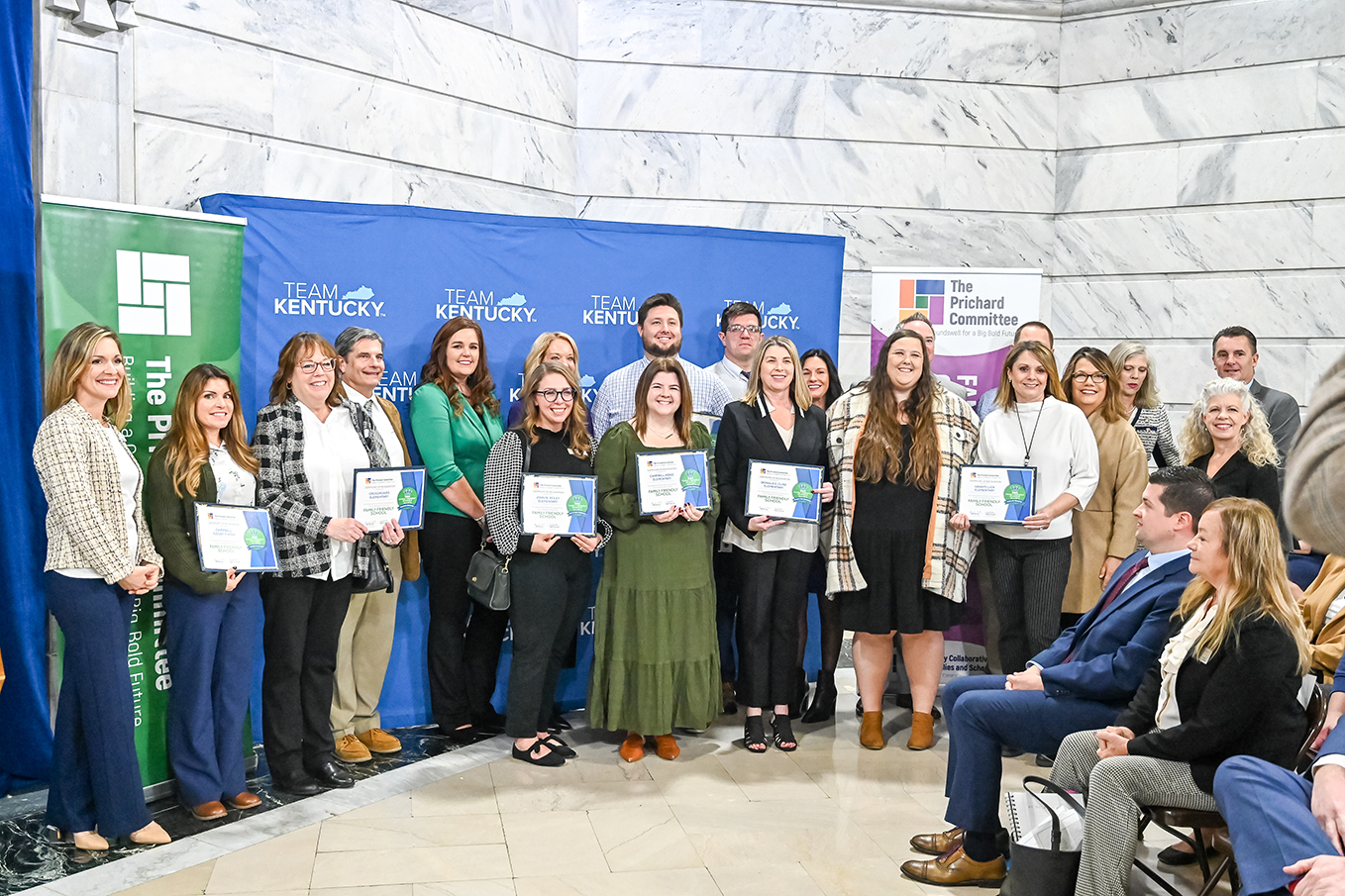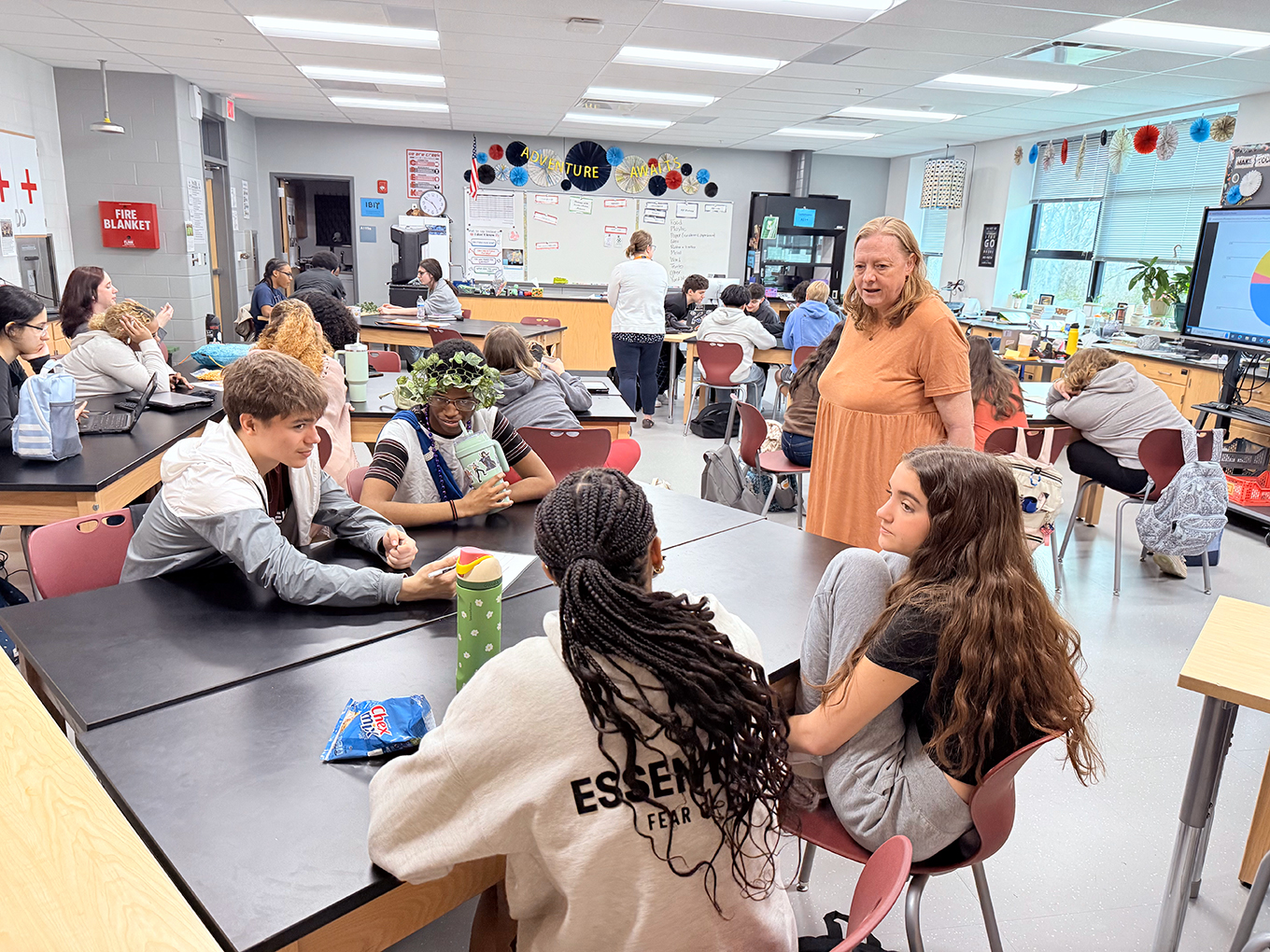By Ann Marie Stevens
ann.stevens@scott.kyschools.us
Sometimes teachers need a change. You look at the same worksheet you’ve used the past four years and just sigh. How do you keep it fresh? What do your students need from you in order to feel engaged?
Several years ago I almost begged my administrators to let me move from the 9th-grade center, where I taught Spanish 1 for six years, to the high school, where I might also teach other levels. Much to my surprise, I wound up with advanced placement Spanish one week before school. No training, no textbooks. Let’s just say it was a challenge, though one I eventually relished.
That first year I stumbled a lot, probably learning more than my students. But I learned the value of connecting with a larger network of more experienced educators. Through the generosity of the Southern Conference of Language Teachers and Centro Mundo Lengua, I earned a scholarship to an AP teacher workshop in Seville, Spain. Talk about change.
From the first, I re-learned what it was like to be a novice. I had one flimsy year of experience teaching AP Spanish and was less proficient at speaking than the other workshop participants. My fellow teachers were AP exam graders and native speakers, while our facilitator was an author of the test.
But in Seville, we were immersed in the richness of language and culture, rarely hearing English, tasting new words like new wines. The satisfying thing about being the least proficient person at the workshop was that I had the greatest opportunity for improvement.
I kept asking my colleagues at the workshop for advice on helping my students be successful on the AP test. They uniformly said, “You have to speak Spanish all the time.” I have had reservations about the full immersion approach. I doubted my abilities to speak Spanish well enough, dreaded losing control of the class and though it would be difficult to build relationships with students if they couldn’t talk about casual things with their teacher.
But I reflected on my own experience attempting to discuss high-level pedagogy and cultural themes as the least-able person in the room. I was learning the advanced vocabulary and grammar structures because others around me were using them. Why would it be any different for my students?
The summer workshop ended, school started and the learning environment in room 164 changed. My students heard me speaking mostly Spanish from the first day and students who had me the previous year noticed that the desks were arranged in groups of four rather than straight rows. I wanted them to talk. They were very quiet. I emailed their parents and explained my approach. I took a few minutes in English to ask for their best efforts at listening and participating, and promised that they would notice a difference in their ability to understand Spanish in a month. Interestingly, my AP students were more resistant at first than the five classes of Spanish 2. But they almost all tried to listen and participate.
After about seven weeks I surveyed my students. I asked, “Based on your own impressions, what percentage of the time is the teacher speaking Spanish in class?” They overwhelmingly marked 70-80 percent or 90-100 percent. According to the American Council on the Teaching of Foreign Languages, teachers should speak the target language 90 percent of the time. I then asked, “How much are you understanding?” and students were almost evenly distributed between “some,” “about half,” and “most,” with 5 percent saying “all” and one student saying “none.”
Finally, I asked, “How do you feel about your understanding of spoken Spanish?” Eighty-one percent marked that they were “struggling, but I can get it with work” or “fine, I understand most and can get what I need by asking for help.” Another 8 percent said, “I feel great. I understand a lot and am learning more.” Nine percent marked “I feel frustrated but have not given up” and 2 percent marked “I have given up.”
Frankly, I was thrilled to read comments that suggested the students were learning and were willing to work at understanding Spanish. One student wrote: “I understand most of what you’re saying, but as the unit goes on, I learn and understand more.” Another said, “There are some things that I don’t understand, but I normally can figure it out after a little bit.”
Not everyone has an opportunity to learn new content and strategies in such a fabulous environment as Spain. But my experience shows the value of leaving our classrooms and finding more people to work with. Our best schools offer these opportunities to educators and help us nurture strengths we weren’t sure we had and uncover new ones.
In short, change can be good. Throw away the worksheet. Do something hard and have faith it will work. You can always change it again if you need to.
Ann Marie Stevens is a National Board certified Spanish teacher at Scott County High School, where she foster curiosity and global-mindedness in her students through rich classroom experiences and community engagement. She is also a 2015-16 Hope Street Group Kentucky Teacher Fellow.





Leave A Comment